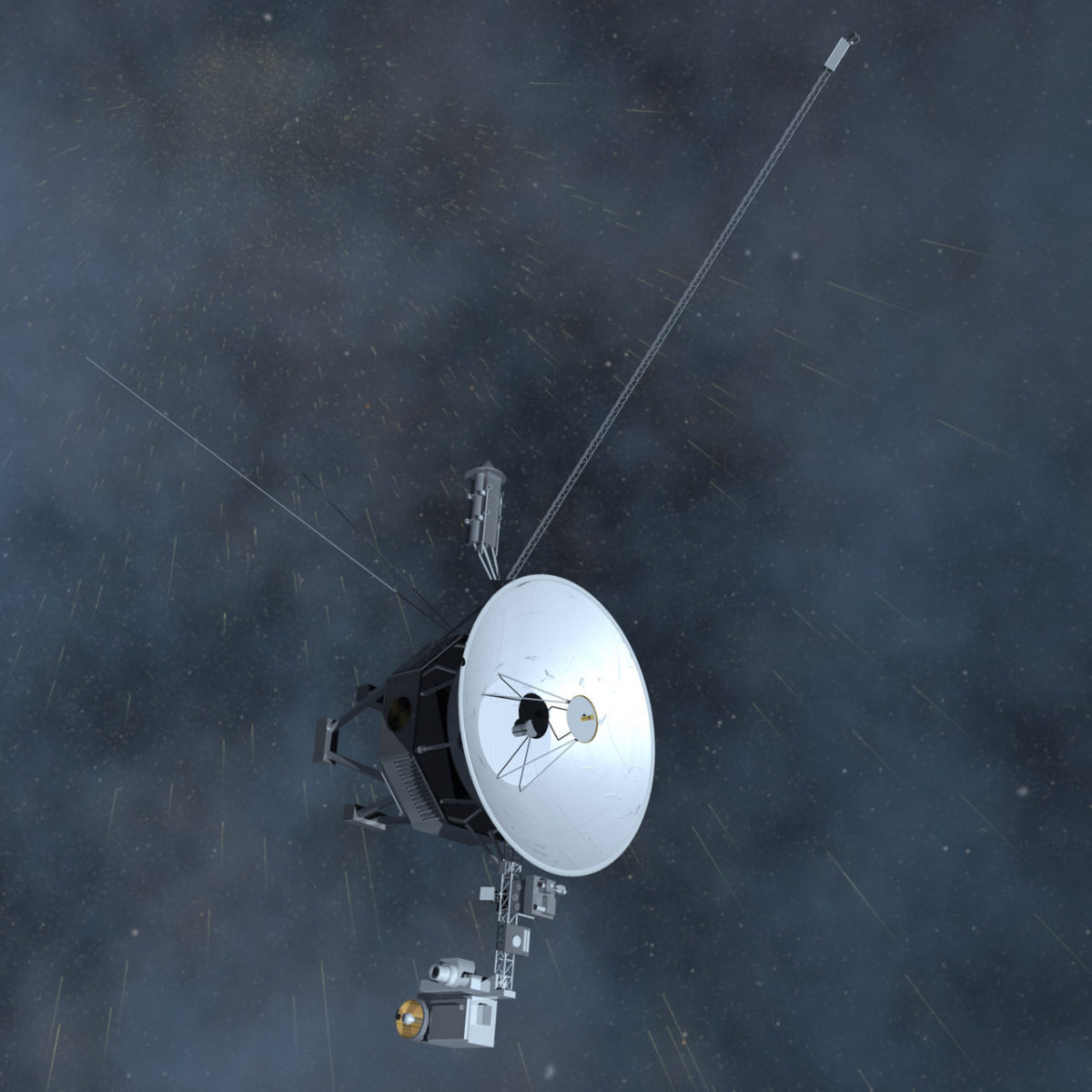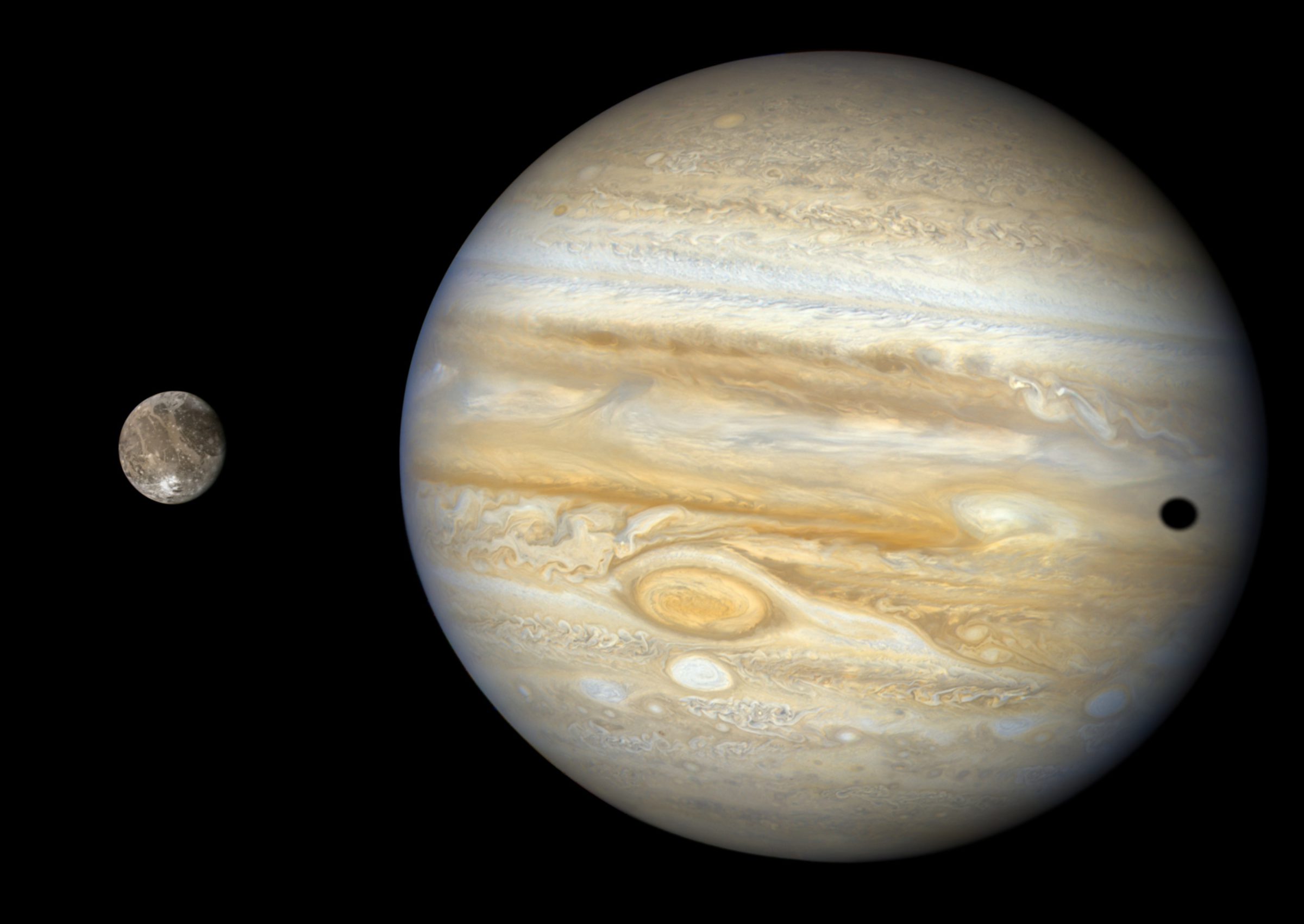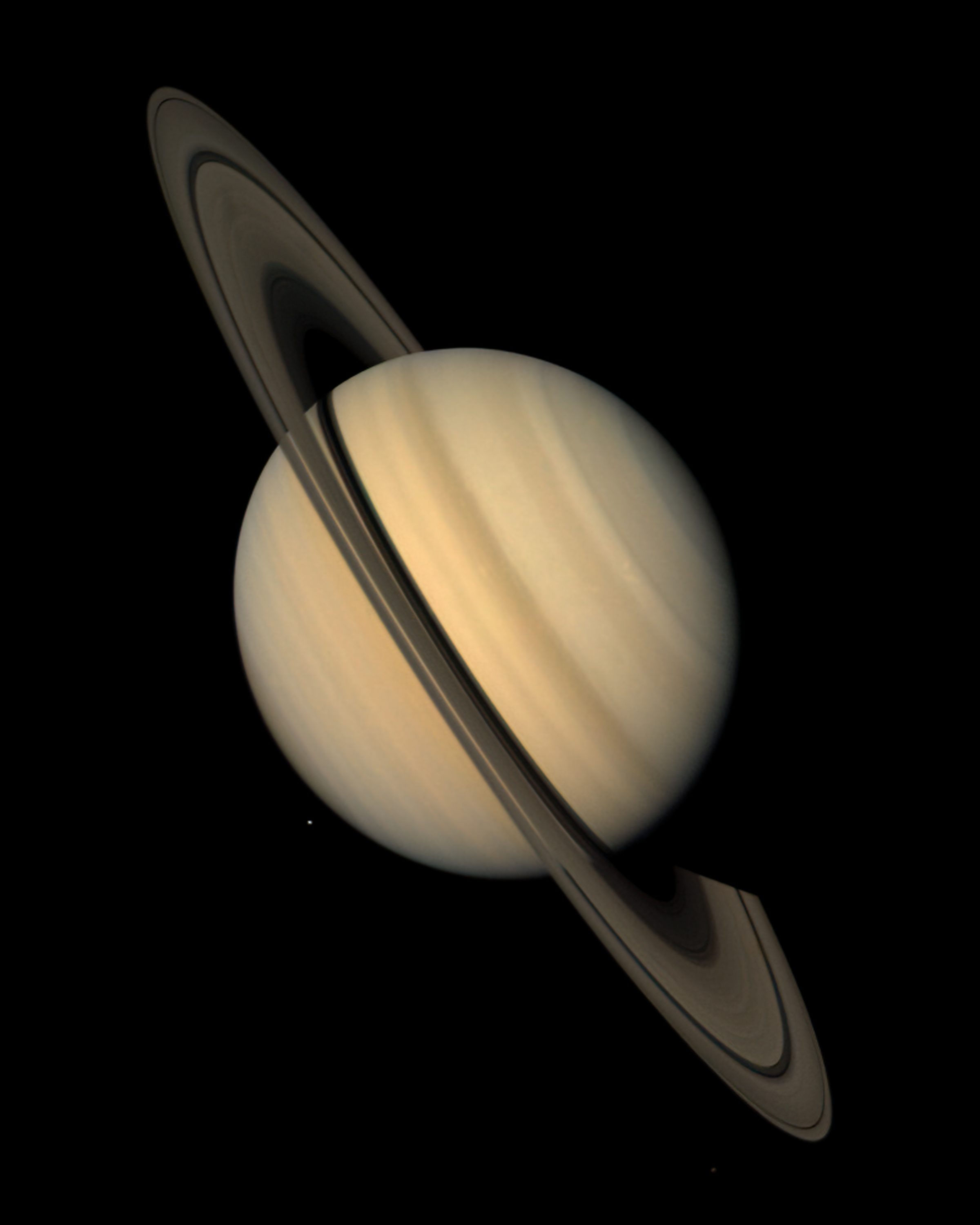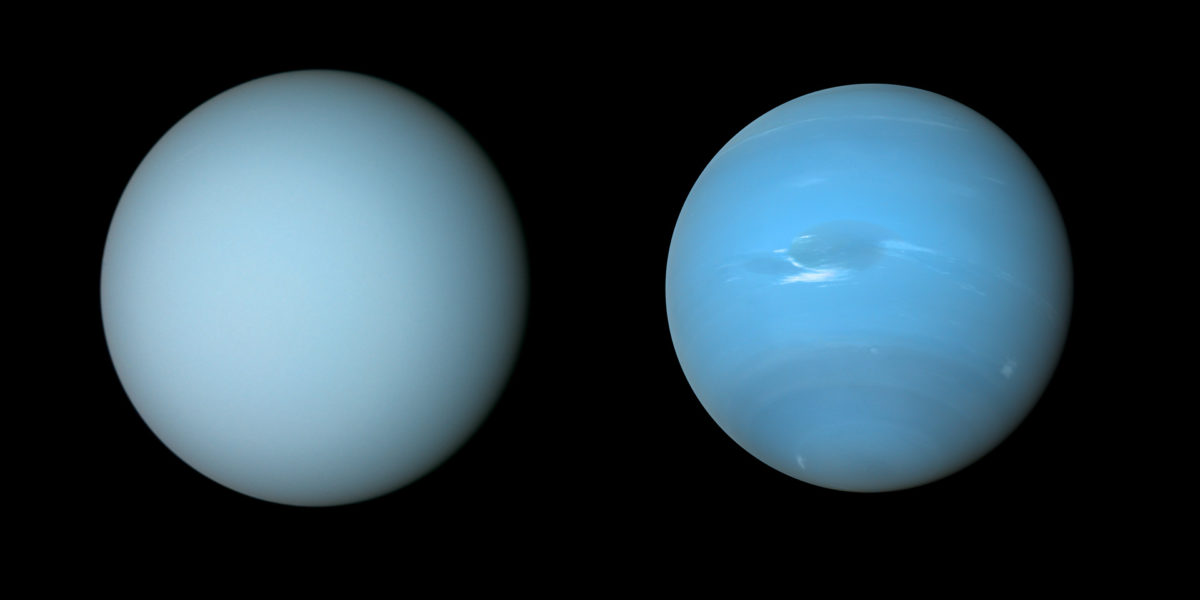The Voyager missions
Highlights
- Voyager 1 and Voyager 2 launched in 1977 and made a grand tour of the solar system's outer planets.
- They are the only functioning spacecraft in interstellar space, and they are still sending back measurements of the interstellar medium.
- Each spacecraft carries a copy of the golden record, a missive from Earth to any alien lifeforms that may find the probes in the future.
What are the Voyager missions?
The Voyager program consists of two spacecraft: Voyager 1 and Voyager 2. Voyager 2 was actually launched first, in August 1977, but Voyager 1 was sent on a faster trajectory when it launched about two weeks later. They are the only two functioning spacecraft currently in interstellar space, beyond the environment controlled by the sun.
Voyager 2’s path took it past Jupiter in 1979, Saturn in 1981, Uranus in 1985, and Neptune in 1989. It is the only spacecraft to have visited Uranus or Neptune, and has provided much of the information that we use to characterize them now.
Because of its higher speed and more direct trajectory, Voyager 1 overtook Voyager 2 just a few months after they launched. It visited Jupiter in 1979 and Saturn in 1980. It overtook Pioneer 10 — the only other spacecraft in interstellar space thus far — in 1998 and is now the most distant artificial object from Earth.

How the Voyagers work
The two spacecraft are identical, each with a radio dish 3.7 meters (12 feet) across to transmit data back to Earth and a set of 16 thrusters to control their orientations and point their dishes toward Earth. The thrusters run on hydrazine fuel, but the electronic components of each spacecraft are powered by thermoelectric generators that run on plutonium. Each carries 11 scientific instruments, about half of which were designed just for observing planets and have now been shut off. The instruments that are now off include several cameras and spectrometers to examine the planets, as well as two radio-based experiments. Voyager 2 now has five functioning instruments: a magnetometer, a spectrometer designed to investigate plasmas, an instrument to measure low-energy charged particles and one for cosmic rays, and one that measures plasma waves. Voyager 1 only has four of those, as its plasma spectrometer is broken.
Jupiter findings

Over the course of their grand tours of the solar system, the Voyagers took tens of thousands of images and measurements that significantly changed our understanding of the outer planets.
At Jupiter, they gave us our first detailed ideas of how the planet’s atmosphere moves and evolves, showing that the Great Red Spot was a counter-clockwise rotating storm that interacted with other, smaller storms. They were also the first missions to spot a faint, dusty ring around Jupiter. Finally, they observed some of Jupiter’s moons, discovering Io’s volcanism, finding the linear features on Europa that were among the first hints that it might have an ocean beneath its surface, and granting Ganymede the title of largest moon in the solar system, a superlative that was previously thought to belong to Saturn’s moon Titan.
Saturn findings

Next, each spacecraft flew past Saturn, where they measured the composition and structure of Saturn’s atmosphere, and Voyager 1 also peered into Titan’s thick haze. Its observations led to the idea that Titan might have liquid hydrocarbons on its surface, a hypothesis that has since been verified by other missions. When the two missions observed Saturn’s rings, they found the gaps and waves that are well-known today. Voyager 1 also spotted three previously-unknown moons orbiting Saturn: Atlas, Prometheus, and Pandora.
Uranus and Neptune findings

After this, Voyager 1 headed out of the solar system, while Voyager 2 headed toward Uranus. There, it found 11 previously-unknown moons and two previously-unknown rings. Many of the phenomena it observed on Uranus remained unexplained, such as its unusual magnetic field and an unexpected lack of major temperature changes at different latitudes.
Voyager 2’s final stop, 12 years after it left Earth, was Neptune. When it arrived, it continued its streak of finding new moons with another haul of 6 small satellites, as well as finding rings around Neptune. As it did at Uranus, it observed the planet’s composition and magnetic field. It also found volcanic vents on Neptune’s huge moon Triton before it joined Voyager 1 on the way to interstellar space.
Interstellar space
Interstellar space begins at the heliopause, where the solar wind – a flow of charged particles released by the sun – is too weak to continue pushing against the interstellar medium, and the pressure from the two balances out. Voyager 1 officially entered interstellar space in August 2012, and Voyager 2 joined it in November 2018.
These exits were instrumental in enabling astronomers to determine where exactly the edge of interstellar space is, something that’s difficult to measure from within the solar system. They showed that interstellar space begins just over 18 billion kilometers (about 11 billion miles) from the sun. The spacecraft continue to send back data on the structure of the interstellar medium.
After its planetary encounters, Voyager 1 took the iconic “Pale Blue Dot” image, showing Earth from about 6 billion kilometers (3.7 billion miles) away. As of 2021, Voyager 1 is about 155 astronomical units (14.4 billion miles) from Earth, and Voyager 2 is nearly 129 astronomical units (12 billion miles) away.
The golden records
Each Voyager spacecraft has a golden phonograph record affixed to its side, intended as time capsules from Earth to any extraterrestrial life that might find the probes sometime in the distant future. They are inscribed with a message from Jimmy Carter, the U.S. President at the time of launch, which reads: “This is a present from a small, distant world, a token of our sounds, our science, our images, our music, our thoughts and our feelings. We are attempting to survive our time so we may live into yours.”
The covers of the records have several images inscribed, including visual instructions on how to play them, a map of our solar system’s location with respect to a set of 14 pulsars, and a drawing of a hydrogen atom. They are plated with uranium – its rate of decay will allow any future discoverers of either of the records to calculate when they were created.
The records’ contents were selected by a committee chaired by Carl Sagan. Each contains 115 images, including scientific diagrams of the solar system and its planets, the flora and fauna of Earth, and examples of human culture. There are natural sounds, including breaking surf and birdsong, spoken greetings in 55 languages, an hour of brainwave recordings, and an eclectic selection of music ranging from Beethoven to Chuck Berry to a variety of folk music.
Support missions like Voyager 1 and 2
Whether it's advocating, teaching, inspiring, or learning, you can do something for space, right now. Let's get to work.


 Explore Worlds
Explore Worlds Find Life
Find Life Defend Earth
Defend Earth


